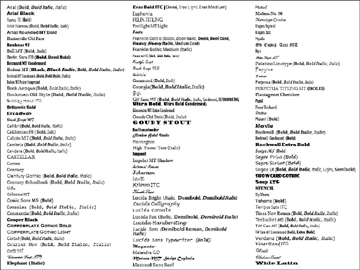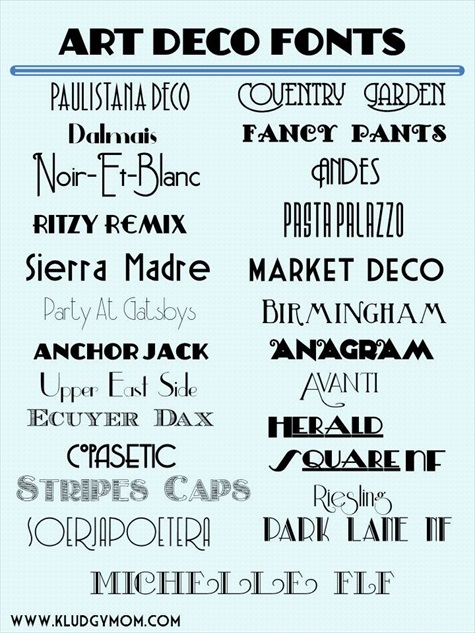
Contains values for attributes such as boldness, width, italic angle, etc. Defines caret positions within ligatures, allowing more accurate editing than simply dividing up the glyph width.Ĭontains font descriptor data.
Truetype fonts list how to#
Indicates how to justify text (how extra space is distributed, and effects such as stretching glyphs, inserting kashidas, or choosing alternate forms).Ĭontains ligature caret data. Specifies baselines (Roman, hanging, centered, etc.) for aligning various types of script. Specifies combinations of component glyphs to form accented compound glyphs (more compactly than in the glyf table). Allows larger/more complex tables, and possibly more compact encoding.ĭescribes AAT features, implemented by subtables in the mort table, and points to name table strings that describe them. Features determine what rules are applied to transform a glyph stream.Ĭontains tables specifying AAT “glyph metamorphosis” effects: ligatures, contextual or non-contextual substitutions, insertions, and rearrangements.Įxtended version of the mort table. Graphite feature table used to store features and possible settings specified in GDL. Graphite table used to map from glyph id to offset in Glat table. This includes attachment points, ligature components, directionality, and breaking data. Graphite glyph attribute table used to store glyph specific information specified in GDL. This includes glyph classes, search patterns, and actions to transform a glyph stream. Graphite table used to store rules specified in Graphite Description Language (GDL). Same basic capabilities as GSUB and GPOS. Also can override line spacing data in other tables.Ĭontains paragraph justification data. Supports horizontal and vertical baselines.

Can provide information on roman, centered, and hanging baselines. (Attachment points must be specified in GPOS too.)Ĭontains baseline data. Indicates glyph classes, caret locations for ligatures, and provides an attachment point cache. The following types of positioning are supported: single glyph adjustment, pair adjustment, cursive attachment, mark (diacritic) to base, mark to ligature, mark to mark, and contextual use of the preceding.Ĭontains glyph definition data. The following types of substitutions are supported: one to one, one to many, one to several alternates, many to one, and contextual use of the preceding.Ĭontains glyph positioning data. Rarely used.Ĭontains glyph substitution data. They contain information for embedded bitmap glyphs. Used instead of glyf table.Ĭontains precalculated vertical origins for PostScript glyphs. Hints in the glyf table rely on these tables to provide subroutines and common values.Ĭontains embedded PostScript glyphs. Indicates at what sizes glyphs should be rendered using hints and/or anti-aliasing techniques. Not used by any known OS or applications, but its inclusion is recommended by TTF specification. Indicates overall font appearance based on HP Printer Control Language (PCL) specification. Indicates complexity of glyphs and hints. Mapping from glyph id to offset in glyf table. Vertical metrics analagous to hmtx, hhea, hdmx. Also contains line spacing (Mac).Ĭontains precalculated advance widths for hinted glyphs.Ĭontains size where each glyph starts scaling linearly (where size is unaffected by hints). Also contains font appearance (Mac).Ĭontains advance width and left side bearing for each glyph.Ĭontains overall horizontal metrics and caret slope. Can be empty.Ĭontains line spacing, font weight, font style, codepoint ranges (codepage and Unicode) covered by glyphs, overall appearance, sub- and super-script support, strike out information.Ĭontains overall font metrics and checksum for font. Multi-platform.Ĭontains glyph names usually based on standard PostScript names or Unicode ids. A glyph can consist of points or be composed from other glyphs in the font.Ĭontains multiple mapping tables from Unicode and various 8-bit encodings to glyph ids.


Arbitrary numbered strings can also be present.Ĭontains glyph outlines and hints. Some numbers have a standard meaning such as font name and copyright.

Strings are multilingual and multi-platform and are identified by number. Contains strings that provide general information about the font.


 0 kommentar(er)
0 kommentar(er)
